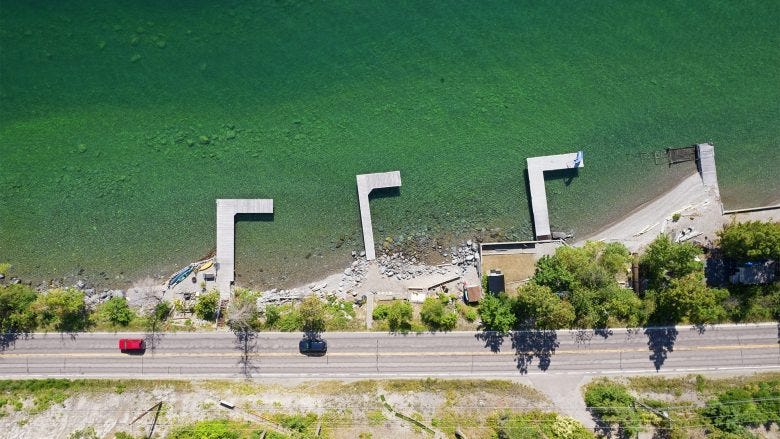Tribes to reduce dam flows to keep Flathead Lake closer to full pool
Water managers say even with reduced flows, Flathead Lake will be well below its optimal level by August 31
By Justin Franz, Montana Free Press

The Confederated Salish and Kootenai Tribes received permission from the secretary of the Interior on Friday to reduce the amount of water flowing through the Séliš Ksanka QÍispé Dam near Polson to keep Flathead Lake closer to full pool amid an increasingly severe drought in northwest Montana.
The decision to reduce flows is expected to affect downstream fisheries and electricity production for the rest of June. However, officials hope that an increase in water volume later in the summer in the lower sections of the river will mitigate these impacts.
“We received approval from the secretary of the Interior to cut our required instream flows below the usual levels,” said Brian Lipscomb, CEO of Energy Keepers, Inc., which operates the dam for the tribe, in a press release. “This sacrifice is forecasted to keep lake levels within 12 inches of full pool through the end of July. This will come at a financial cost for operations during the early summer, serve the minimums of robust fisheries and allow more boat dock users to remain viable during a busy summer season.”
By reducing the required minimum flows by 45%, from 12,700 to 7,000 cubic feet per second, Flathead Lake will stay within a foot of full pool for 46 days and within 18 inches for 62 days. If no action were taken, Energy Keepers officials said it would only be within 18 inches of full pool for nine days. However, even with these adjustments, the lake is projected to be three feet below full pool by August 31.
Flathead Lake typically begins the year at its lowest level, around 2,884 feet datum (the standard measure to gauge water levels in lakes), and starts to fill up in April and May, reaching full pool at 2,893 feet in June. The lake generally remains within a foot of that until after Labor Day. However, this year, the lake has been affected by early hot and dry weather that has persisted in the region. Parts of northwest Montana are currently experiencing moderate to severe drought.
In its press release, Energy Keepers officials said that they worked closely with the Natural Resources Department of the Confederated Salish and Kootenai Tribes to find a way to protect recreational interests on Flathead Lake while minimizing downstream impacts related to the reduced flow. On Thursday, they presented that plan to the CSKT tribal council for approval before requesting a variance from the U.S. Department of Interior, which establishes the minimum flows.
“Under challenging situations, we applaud our staff for presenting a solution,” Council Chairman Michael Dolson said in the press release. “We supported this action to be good stewards of the resources, good economic partners and also good neighbors.”
This isn’t the first time that water levels have posed a problem on Flathead Lake in recent years. In 2023, the lake never reached full pool, much to the dismay of dock and marina owners around the lake. Some businesses that depend on the lake and its recreational opportunities expressed concern that the tribe was focusing more on energy production and less on those who live along the lake. However, dam managers stated that the water level issues that year were once again the result of drought conditions.
In late 2023, Representative Ryan Zinke introduced the “Fill the Lake Act,” which would require the Department of the Interior to maintain the depth of Flathead Lake between 2,892 and 2,893 feet from June 15 to September 15. Although the bill did not pass during that session, Zinke has since reintroduced it. Last week, Zinke was among those who urged the federal government to allow Energy Keepers to decrease its minimum flows through the Séliš Ksanka QÍispé Dam. Zinke also suggested that more water should be released upstream to fill Flathead Lake.
“Montana is facing one of its driest seasons on record, and unless action is taken now, we’re looking at a repeat, or worse, of the water crisis on Flathead Lake,” Zinke said in a press release last week. “Our small businesses, farmers, ranchers and communities cannot afford another devastating season. While releasing from Hungry Horse and reducing flow from the dam will not bring the lake to full pool, it will help prevent a catastrophic drop.”



